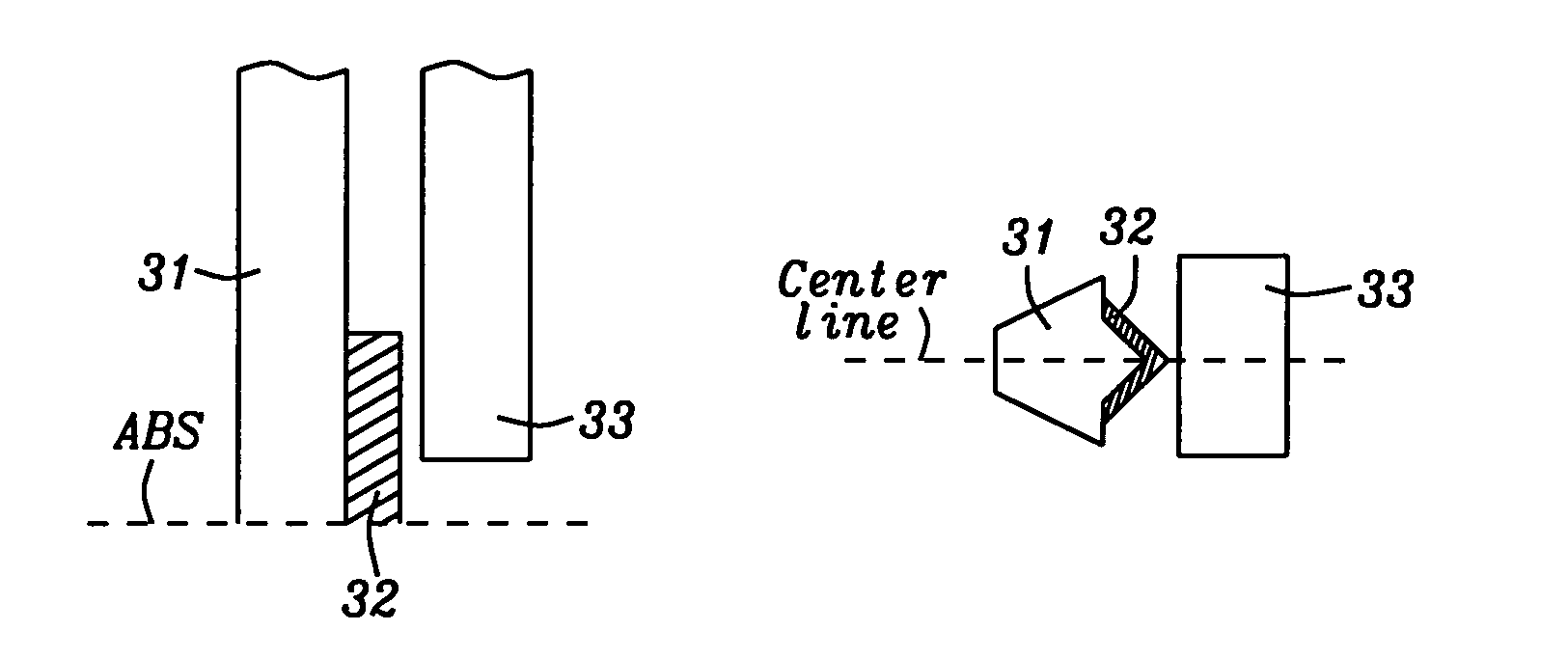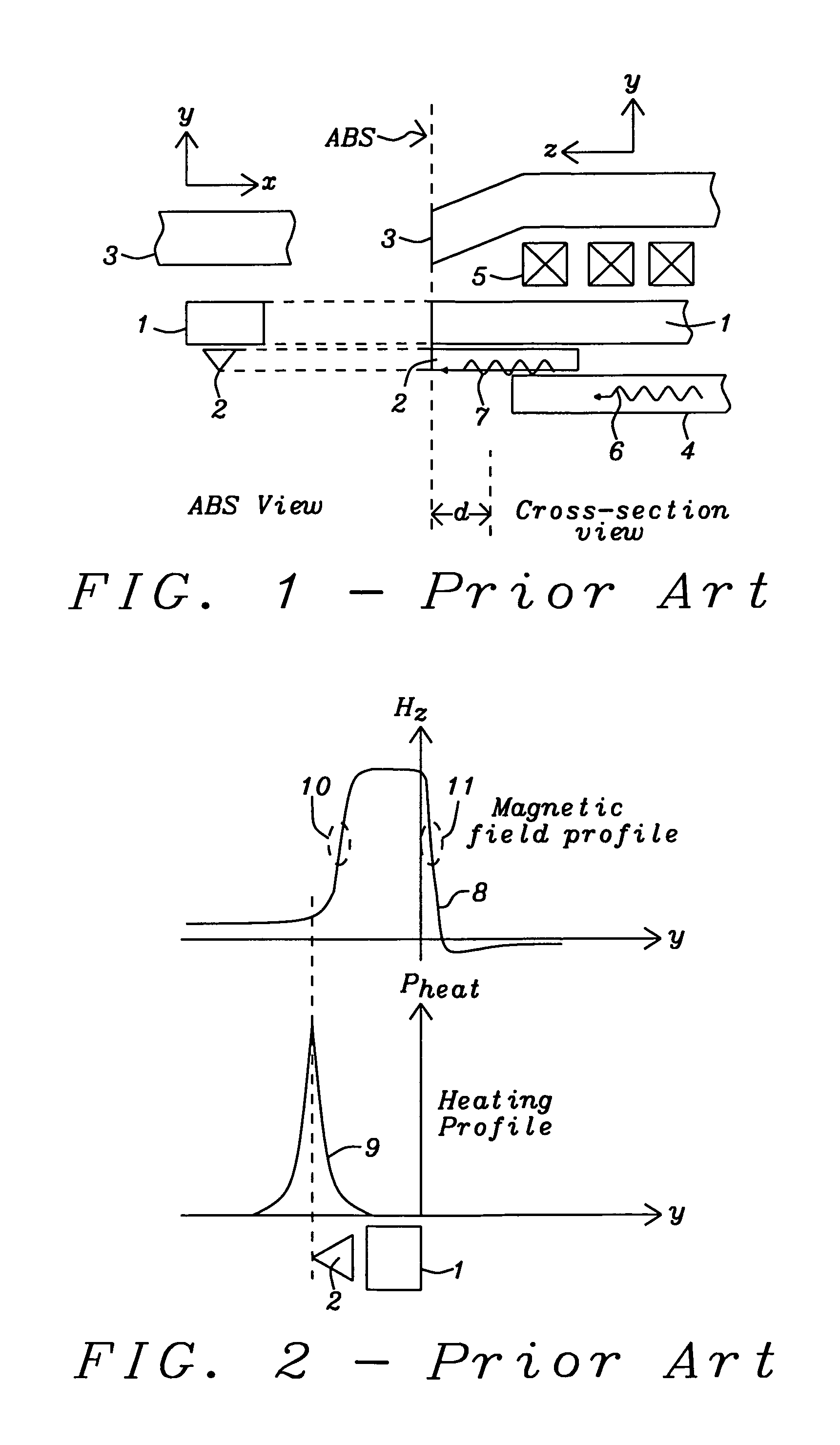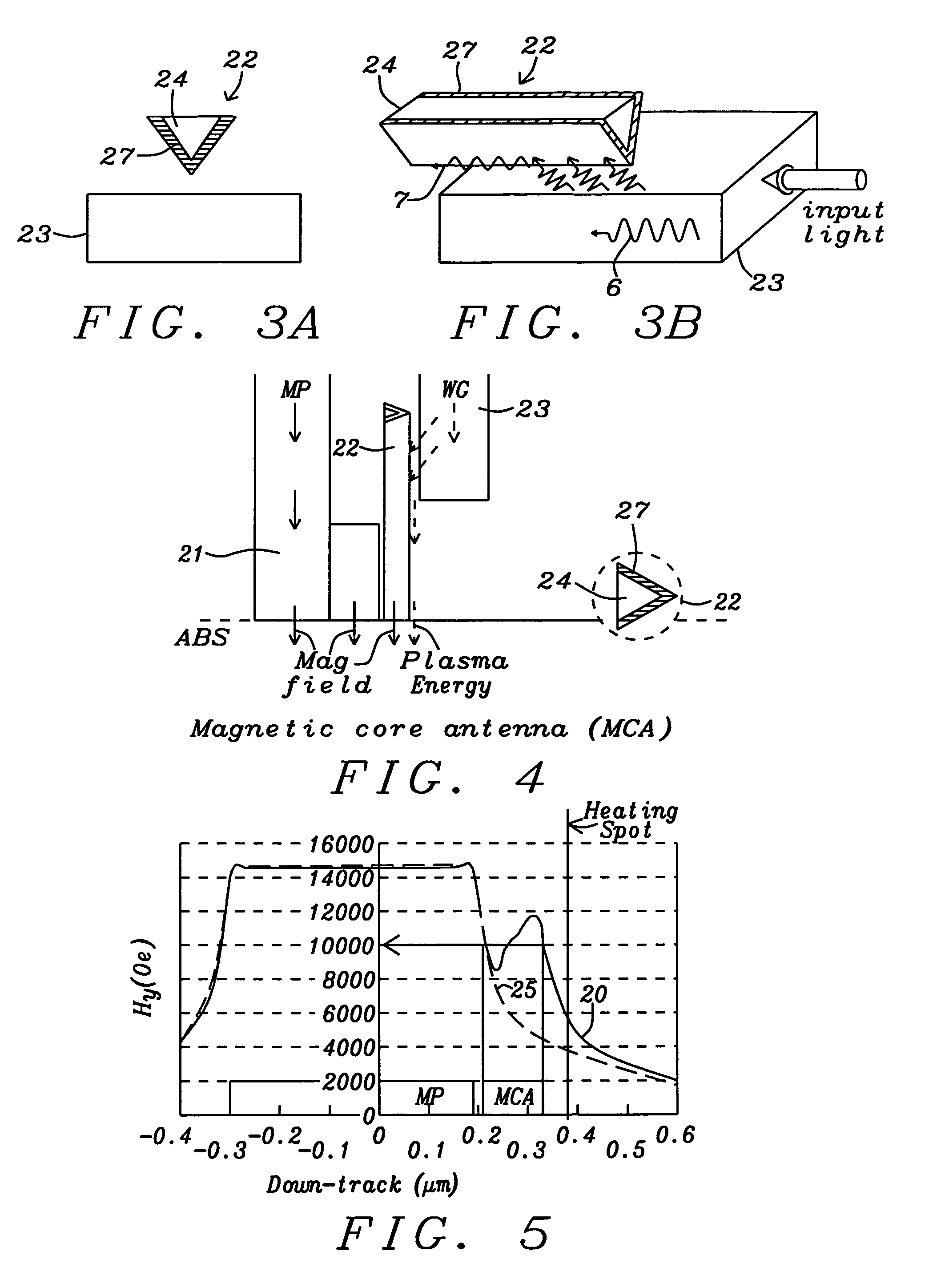Magnetic core plasmon antenna with improved coupling efficiency
a plasmon antenna and magnetic core technology, applied in the field of magnetic read/write head fabrication, can solve the problems of reducing so as to achieve significant affecting the coupling efficiency of plasmon mod
- Summary
- Abstract
- Description
- Claims
- Application Information
AI Technical Summary
Benefits of technology
Problems solved by technology
Method used
Image
Examples
first embodiment
[0065]Referring to schematic FIGS. 10A, B and C, there is shown a side view (A), an ABS view (B) and a vertical cross-sectional view (C) of a first embodiment of a TAMR head that has a magnetic write pole (shaped so that it also forms a magnetic core for the plasmon antenna) (31) over which is formed a PGL of varying thickness (32). There is also an optical waveguide (33) adjacent to the plasmon antenna. Thus, the magnetic core of the plasmon antenna is an integral part of the MP and is, in fact, formed from the material of the MP itself. The PGL conformally covers two opposite sides of the core.
[0066]In this embodiment and all other embodiments the ABS cross-sectional shape of the MP has been given an exemplary trapezoidal form, with the magnetic core of the antenna either projecting out from the widest edge of the MP if it is formed as an integral part of the MP (as in this first embodiment), or adjacent to the widest edge of the MP, if it is a separate core. The antenna core has ...
second embodiment
[0070]Referring now to schematic FIGS. 11A, B and C, there is shown a second embodiment that is in every respect the same as the first embodiment except that the MP (39) and the MCA ((31 and (32)) are separate and disconnected structures. Note that the MP is here labeled (39) to distinguish it from the separate magnetic core (31) of the MCA, which in this embodiment has the shape of a triangular prism with its vertex being a straight line that is substantially parallel to the MP. In the following embodiments, when the MP also forms the core of the MCA it will be numbered (31), when the MP is separate from the core of the MCA (as in this embodiment), the MP will be numbered (39) and the core of the MCA will be numbered (31).
[0071]During recording, the magnetic field from the MP (39) also magnetizes the magnetic core (31) of the MCA, which produces a magnetic write field in the medium in addition to the field of the MP. Separation between the MP and the MCA is preferably less than 100...
third embodiment
[0072]Referring to schematic FIGS. 12A, B and C, there is shown a schematic side view, an ABS view and a vertical cross-sectional view of a third embodiment of the present invention, in which there is formed a TAMR head that, like the first embodiment, includes an MCA that is a variable thickness PGL (32) formed directly on a portion of the MP (31) so that the MCA becomes an integral part of the MP. As in the first embodiment there is a WG (33) adjacent to the vertex of the PGL and alongside the thickest portion of the PGL for the most efficient coupling of optical and plasmon energies. During the recording process, the magnetic field is generated by the magnetic core (31) of the MCA and transmitted into the recording medium. The optical mode in the WG (33) couples to the PGL and generates a plasmon mode that is transmitted along the MCA towards the ABS of the TAMR head. The near field of this plasmon mode impinges on the recording medium and heats it locally. The PGL (32) is thinne...
PUM
| Property | Measurement | Unit |
|---|---|---|
| length | aaaaa | aaaaa |
| length | aaaaa | aaaaa |
| thickness | aaaaa | aaaaa |
Abstract
Description
Claims
Application Information
 Login to View More
Login to View More - R&D
- Intellectual Property
- Life Sciences
- Materials
- Tech Scout
- Unparalleled Data Quality
- Higher Quality Content
- 60% Fewer Hallucinations
Browse by: Latest US Patents, China's latest patents, Technical Efficacy Thesaurus, Application Domain, Technology Topic, Popular Technical Reports.
© 2025 PatSnap. All rights reserved.Legal|Privacy policy|Modern Slavery Act Transparency Statement|Sitemap|About US| Contact US: help@patsnap.com



